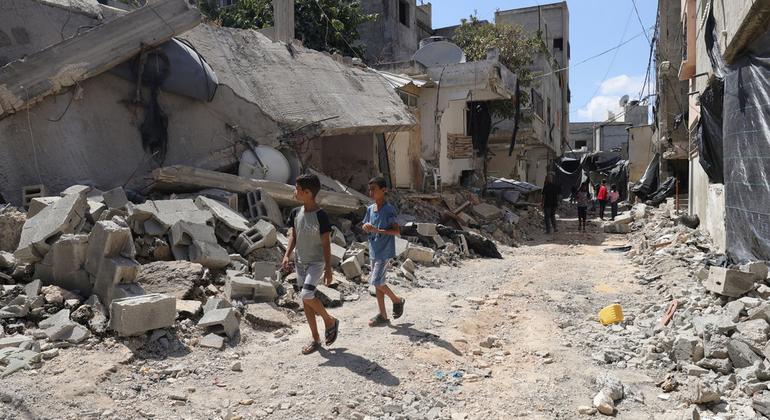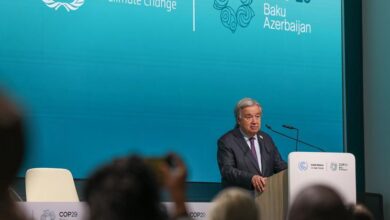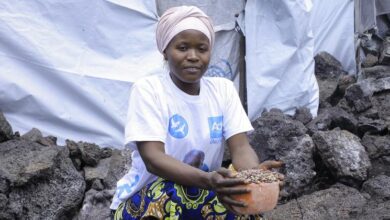Gaza: War sets Palestinian development back nearly 70 years


“Without lifting economic restrictions, facilitating recovery and investing in development, the Palestinian economy may not be able to restore pre-war levels and move forward solely by relying on humanitarian aid, ” Gaza War: Projected Socio-Economic Impacts on the State of Palestineconcluded, by the United Nations Development Program (UNDP) and the United Nations Economic and Social Commission for Western Asia (UNESCWA).
The analysis presents three recovery scenarios for Palestine. Given that recovery will be a long process, the report assessed both the immediate impact expected for 2025 and the long-term impact predicted for 2034, a decade after the start of the conflict. suddenly.
“Our review caters to Sounding the alarm about millions of lives being shattered and decades of development efforts being erased,” said ESCWA Executive Secretary Rola Dashti.
“It is time to end the suffering and bloodshed that is engulfing our region. We must unite to find a lasting solution in which all peoples can live in peace, dignity and reap the benefits of sustainable development and, ultimately, rule of law and justice. International law is respected.”
Projections estimate that gross domestic product (GDP) will decline by 35.1% in 2024 compared to a no-war scenario, with unemployment likely to rise to 49.9%.
Three recovery scenarios
Based on findings published in November and May, the report estimates that Poverty rate in Palestine will increase to 74.3% by 2024, affecting 4.1 million peopleOf which 2.61 million people newly fell into poverty.
The assessment also examines the extent and magnitude of deprivation, using multidimensional poverty indicators, and includes the outlook for Palestine’s recovery following a ceasefire as well as three early recovery scenarios.
The unrestricted early recovery scenario sees restrictions on Palestinian workers lifted and clearance revenues restored to the Palestinian Authority.
In addition to the $280 million in humanitarian aid, $290 million is allocated annually for recovery efforts, resulting in a 1% increase in productivity each year, helping the economy recover and getting Palestine’s development back on track. .
Unrestricted aid can help
The assessment found that a comprehensive reconstruction and recovery plan, combining humanitarian aid with strategic investments in recovery and reconstruction along with the lifting of economic restrictions, could help bring the economy back to normal. Palestine is back on track to align with its 2034 development plans.
However, UNDP Director Achim Steiner said this scenario can only happen if recovery efforts are not limited.
“The projections in this new assessment confirm that amid the immediate suffering and terrible loss of life, a serious development crisis is also unfolding. – something that endangers the future of Palestinians for generations to come,” he said.
“The review indicates that, Even if humanitarian aid is provided every year, the economy may not regain pre-crisis levels for a decade or more..”
He said, when actual conditions allow, the Palestinian people need a strong early recovery strategy linked to a humanitarian assistance phase, laying the foundation for a sustainable recovery.
The humanitarian situation is getting worse
The humanitarian situation is dire and worsening every day, UNDP’s Chitose Noguchi said, briefing reporters in Geneva from Deir Al-Balah, Gaza, where many displaced people now live.
“The State of Palestine is experiencing an unprecedented setback in its development up to 1955,” she said.
“The restrictions currently holding back the economy must be lifted,” she emphasized, emphasizing the importance of the new assessment conclusions for the region. Currently, assessments are underway in Lebanon and Syria.
Read the full report This.




